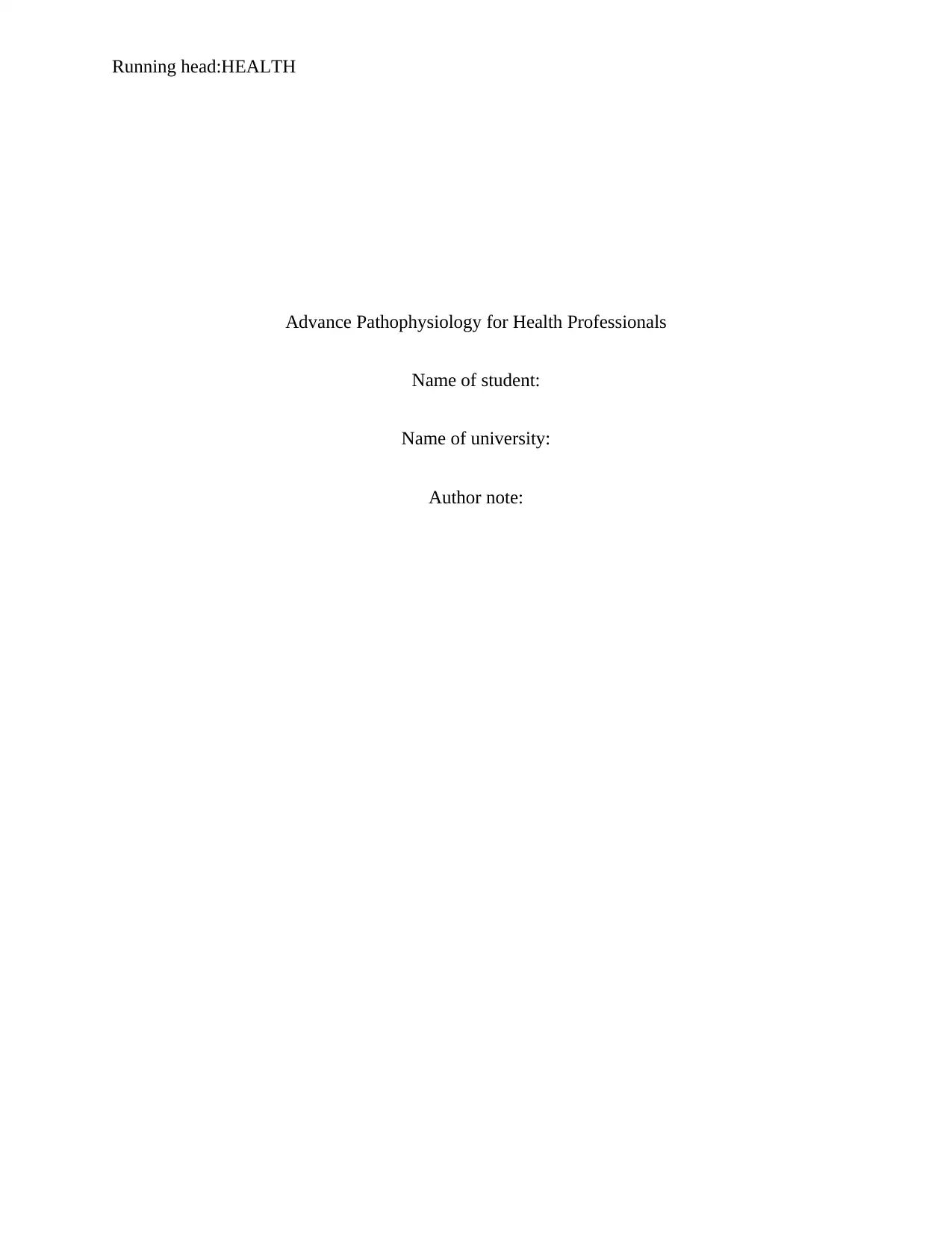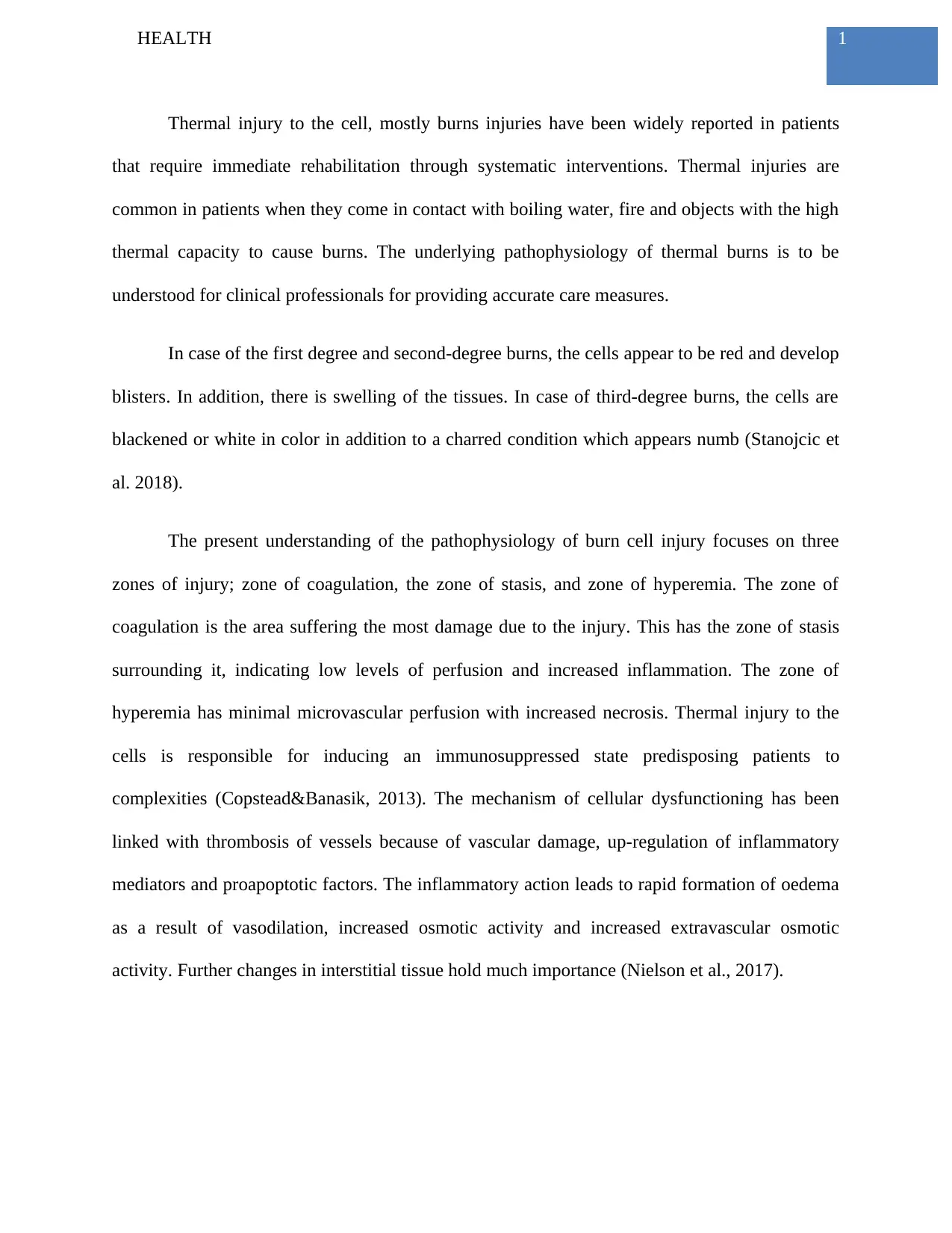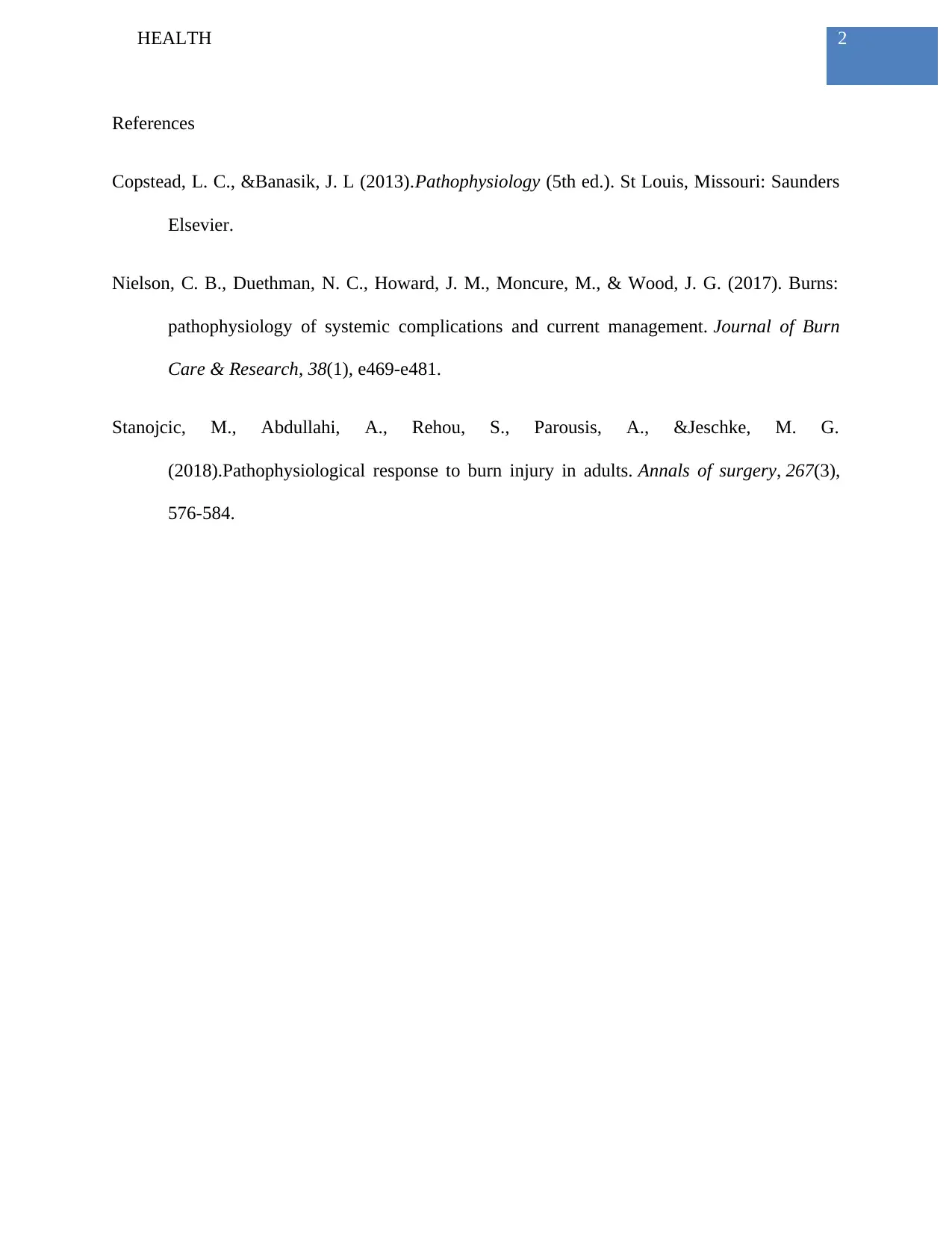Advanced Pathophysiology: Burn Injuries and Clinical Implications
VerifiedAdded on 2021/04/24
|3
|441
|285
Report
AI Summary
This report delves into the pathophysiology of burn injuries, focusing on the cellular and systemic responses to thermal trauma. It examines the mechanisms of injury, including the zones of coagulation, stasis, and hyperemia, and discusses how these zones relate to the extent of tissue damage. The report highlights the role of inflammation, vascular changes, and the immune system in the progression of burn injuries. It also addresses the clinical implications of these pathophysiological processes, emphasizing the importance of understanding these concepts for effective patient care and management. The report draws on references to support the understanding of the topic.
1 out of 3





![[object Object]](/_next/static/media/star-bottom.7253800d.svg)